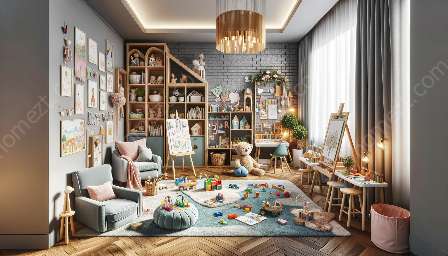Dress-up and pretend play are essential activities for children that encourage imagination, creativity, and social development. When incorporated into the playroom, they can provide a wealth of learning opportunities and endless fun. In this article, we'll explore the benefits of dress-up and pretend play and provide ideas for incorporating these activities into nursery and playroom settings.
The Importance of Dress-Up and Pretend Play
Dress-up and pretend play are more than just fun and games; they are crucial for a child's cognitive and social development. These activities allow children to explore different roles, express themselves creatively, and learn to interact with others. Through dress-up and pretend play, children can become firefighters, doctors, princesses, or superheroes, and engage in storytelling and imaginative scenarios.
Research has shown that dress-up and pretend play can enhance a child's problem-solving skills, empathy, and understanding of social roles. It also provides an opportunity for children to practice language and communication skills as they engage in dialogue and negotiate roles with their playmates.
Playroom Activities for Dress-Up and Pretend Play
Creating a designated space for dress-up and pretend play in the playroom can spark children's creativity and provide them with a safe environment to explore new identities. Here are some ideas for playroom activities that can enhance the dress-up and pretend play experience:
- Dress-Up Corner: Designate an area in the playroom as a dress-up corner, complete with costumes, accessories, and a mirror. This will encourage children to experiment with different roles and characters.
- Role-Playing Props: Provide props and toys that support different pretend play scenarios, such as a doctor's kit, play kitchen, or tool set. These props can inspire imaginative play and storytelling.
- Puppet Theater: Set up a puppet theater in the playroom, where children can act out stories with puppets and interact with each other in a creative and expressive way.
- Imagination Station: Create a cozy reading nook or a small stage where children can let their imaginations run wild, whether through storytelling, acting, or singing.
Incorporating Dress-Up and Pretend Play into Nursery and Playroom Settings
When designing a nursery or playroom, it's important to consider how dress-up and pretend play can be seamlessly integrated into the space. Here are some tips for incorporating these activities:
- Flexible Storage: Use open shelves, bins, and hooks to store costumes, props, and accessories in an organized and accessible manner. This allows children to independently select and put away items, fostering a sense of responsibility and autonomy.
- Themed Areas: Create themed zones within the playroom, such as a dramatic play area, a construction zone, or a fantasy world, to inspire different types of imaginative play and exploration.
- Child-Centered Design: Consider the height and accessibility of furniture, mirrors, and dress-up items to ensure that children can easily reach and engage with them. Creating a child-friendly environment encourages self-directed play and exploration.
- Creative Display: Showcase children's artwork, storytelling props, and creative projects within the playroom to celebrate their imaginative efforts and encourage pride in their creations.
Conclusion
Dress-up and pretend play are invaluable activities that can enrich a child's development and provide endless opportunities for creativity and learning. By incorporating these activities into the playroom and nursery settings, parents and caregivers can create an environment that fosters imaginative play, social interaction, and cognitive growth. Encouraging children to explore different roles, express themselves, and engage in storytelling through dress-up and pretend play can lay the foundation for a lifelong love of learning and creativity.


